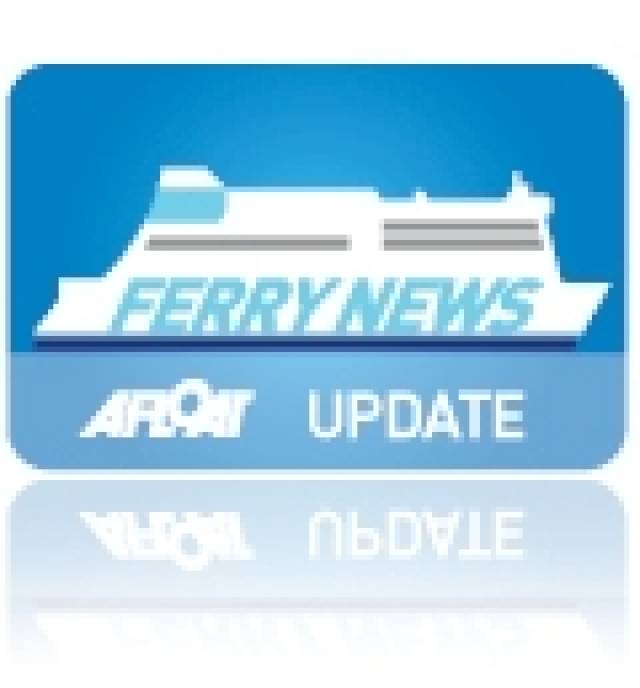#FerryFacelift – Following last month's decision by New Zeland ferry operator Interislander to renew the charter of Kaitaki from ICG for another four years to 2017, as previously reported on Afloat.ie, the ro-pax 22,365 tonnes flagship is to receive a refurbishment.
Passenger areas will be refurbished when the flagship goes to dry-dock in the Autumn, following her season running on the 92km route across the Cook Strait between Wellington and Picton, which has been described as "one of the most beautiful ferry rides in the world".
"Kaitaki passenger spaces have had no refurbishment in the last eight years of the current charter, so the passenger spaces are definitely in need of a facelift," says Interislander General Manager Thomas Davis.
Kaitaki, which means 'Challenger' in Maori, is just shy of 182 metres in length (the equivalent to almost two rugby fields), and can carry 1650 passengers and 550 cars.
"Kaitaki has been Interislander's flagship since her arrival in 2005 and is the largest passenger ferry in New Zealand. She has served us very well over the last eight years," Mr Davis says.
Originally the vessel was launched as Isle of Inishfree for Irish Continental Group (ICG) ferry subsidiary Irish Ferries, firstly to serve on the Dublin-Holyhead and later running Rosslare – Pembroke Dock.
The main scope of the work will include a revamp of the foodcourt area, the bar, the atrium and the toilets, as well as the passenger thoroughfare and shop on deck 8.
Approximately $4.5 million has been budgeted for this work for MJM Marine Ltd. The firm based in Newry, Co. Down has had significant experience in ferry and cruise ship refurbishment work, will be leading the project, in partnership with Swedish company Figura who specialise in ferry passenger design.
MJM Marine Limited has undertaken refurbishment work on cruise ships like Pacific Pearl, Saga Pearl and Celebrity Infinity, as well as Ro-Pax ferries like Stena Superfast.
"Over the last couple of years, Kaitaki has been the busiest she has ever been during the peak summer period. Interislander is really looking forward to being able to offer Kaitaki passengers a much fresher, more comfortable and modern travel experience following the completion of the refurbishment project in September," Mr Davis says.
For artists impressions of the refurbishment concepts, visit the ferry's facebook page.
































































